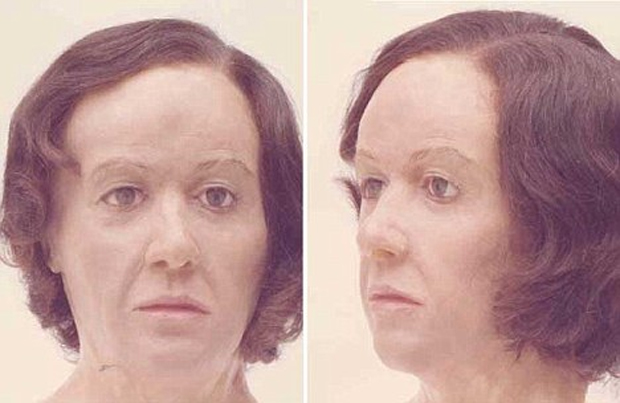NYP and ‘The Ripper’
By Tim Hicks and Chris Clark
1. Introduction
Tim Hicks is a freelance journalist who covers crime for the NYE and followed the Yorkshire Ripper investigation as a young man.
Chris Clark is a retired Police Intelligence Officer with twenty eight years’ service. In retirement he has pursued his interest in unsolved cases. He has co-authored a book “The Face Of Evil”. The true story of serial killer Robert Black. He is currently working on a book investigating the “Hammersmith nude murders” of 1964 to 1965. He co-authored the book “Yorkshire Ripper The Secret Murders” with award winning investigative journalist Tim Tate, which was reviewed in the NYE by Tim Hicks (Review here). For more information on Chris, please visit his website here.
In this article, they assess the response of North Yorkshire Police (NYP) to the possibility that Peter Sutcliffe committed crimes in North Yorkshire.
Background
The Yorkshire Ripper investigation in 1975 – 1981 was, up to that time, the biggest police investigation ever undertaken in Britain. Peter Sutcliffe – a married lorry driver from Bradford – was convicted of murdering thirteen women and attempting to murder another seven between 1975 and 1980.
For those that are unfamiliar with the Yorkshire Ripper case, there is a very good documentary here.
All of the police investigations (Byford, Halliwell and Samson) to determine the full number of offences that Sutcliffe committed have been shrouded in official secrecy and withheld from the public.
Following correspondence over the review, Chris agreed to team up with Tim Hicks to provide – as far as is possible with the information available – a definitive list of the full extent of the crimes committed by the Yorkshire Ripper, not just those he was convicted of. The NYE article giving the authors assessment of the full range of Sutcliffe’s offending is below:
NYE: Yorkshire Ripper How Many Victims?
They believe it is the most up-to-date and accurate assessment of the attacks made by Peter Sutcliffe available to the public. They estimate that Sutcliffe murdered thirty-six women and attempted to murder twenty-three in the period 1964 to 1981.
No such estimate has ever been issued by the police.
Did Sutcliffe attack in North Yorkshire?
All of the offences assessed by the police as having been committed by Peter Sutcliffe are tightly grouped around Manchester, Bradford, Halifax, Leeds, Sheffield and Huddersfield in the West Yorkshire Police (WYP), South Yorkshire Police (SYP) and Greater Manchester Police (GMP) areas. This clearly lacks credibility. Sutcliffe operated across England as part of his work and social life. He did not limit his travel to Yorkshire and Manchester and there was no reason he should limit his crimes to this small area.
By 1979 Police activity in Sutcliffe’s normal hunting grounds in the Leeds, Bradford, Halifax and Manchester red light districts was intense. In January 1981 Sutcliffe moved his geographical area of offending to Sheffield in South Yorkshire, probably to escape it. He may also have changed his geographical area of operations to North Yorkshire for the same reason.
The authors believe that two of the offences he committed and which went undetected, were committed in North Yorkshire. These are:
- An attempted murder in Harrogate on the 18th of February 1979.
- The murder of an unidentified woman whose body was found at Sutton Bank in 1979, which has become known as the “Nude in the Nettles”.
Both offences were covered comprehensively in the NYE articles Peter Sutcliffe or the Harrogate Ripper and Nude in the Nettles. Was it Sutcliffe?
- The attempted murder in Harrogate on the 18th of February 1979
1.1 The facts of the case
This quote from “Yorkshire Ripper The Secret Murders” by Chris Clark and Tim Tate gives the facts of the case.
“In the early hours of Sunday 18 February, a sixteen-year –old student was hit from behind with an all-too-familiar blunt instrument. She survived, though suffering from severe head injuries she was not able to give a description of her attacker as she had not seen him.
What happened next was straight out of the Keystone Cops School of investigation. North Yorkshire Police decided that the young woman had injured herself by falling on the icy pavement and that therefore no crime had taken place. They maintained this incredible fiction even after Home Office pathologist (and consulting Ripper expert) Professor David Gee examined the victim at Leeds General Infirmary and discovered deep and serious skull damage. He noted that “there was one linear laceration on the left side of the top of the head two and a half inches long and on the right side of the top of the head two inches long. A third curved laceration at the back of the head was about one inch long.
It would take several years for the North Yorkshire force to concede that these could not have been caused by an accidental fall and that the student had suffered a vicious attack. But still no connection was made to the unprecedented and enormously high profile hunt for Britain’s most notorious smasher of the back of women’s skulls being conducted by the Ripper teams.”
Sutcliffe attacked Miss Ann Rooney a 22-year-old student on the evening of Friday the 2nd of March 1979 in Leeds. She was struck on the head from behind three times leaving distinctive semi-circular wounds which were established to have come from a round hammer. She sustained no other injuries because Sutcliffe was disturbed and scared off.
1.2 Why the authors believe the Harrogate attack was perpetrated by Sutcliffe
It is possible that the assailant was disturbed; hence the reason that the attack was not pressed home to become a murder. The Harrogate attack has the characteristics of Sutcliffe’s modus operandi:
- The victim was an unaccompanied woman walking at night.
- The attack was launched on foot from behind.
- The victim was completely unaware that she was being followed and there was no conversation prior to the attack (stalking).
- Sutcliffe used variously a ball pein, masonry/walling/lump hammer or a claw hammer in his attacks. The injuries described to Professor Gee by another Doctor above are consistent with a claw hammer. (See Table 3 in Yorkshire Ripper. How Many Victims?). One blow, hitting with the curved side of the claw, at the back of the head, the other two from side-to-side blows connecting with the straight edge of the top of the hammer between the claw and the rounded striker.
- The location was within easy travelling distance of Sutcliffe’s home and work in Bradford. He knew Harrogate well because he did his HGV driver training there and travelled through Harrogate in his work as a lorry driver.
1.3 The failings in the 1981 investigation
- The attack in Harrogate was identical to the Rooney attack two weeks later. But the connection was not made.
- Because the investigation team initially concluded the victim had slipped on the ice, the case never had the degree of publicity or police attention it deserved.
- The original investigation team wrongly eliminated Sutcliffe as a suspect because the hammer was a different size to the hammer the “Yorkshire Ripper” was believed to be using. In doing so, they had obviously used the criteria devised by Detective Superintendent Charlesworth to identify if an attack had been perpetrated by the “Yorkshire Ripper”. Although Sutcliffe had access to a wide range of tools and had variously used a ball pein hammer, a claw hammer and a walling hammer in his attacks. The authors have run the Harrogate attack against the Charlesworth criteria and as you can see, in Table 1 below, the Harrogate attack does not meet any of the Charlesworth criteria used at the time for determining if it was an attack by the Yorkshire Ripper.
- Chief Constable Sir Lawrence Byford of HM Inspectorate of Constabulary completely discredited the Charlesworth criteria on the grounds that they were “very restrictive” and their application had resulted in the elimination of a number of attacks which had in fact been perpetrated by Sutcliffe. He devised his own set of elimination criteria which superseded the Charlesworth criteria. It appears that NYP did not run the case against the Byford Criteria, when they were promulgated in December 1981. The NYE has run the Harrogate attack against the Charlesworth criteria and it qualifies as a Ripper attack in all three categories.
The authors believe this is the first time both offences have been tested against the Byford criteria.
The original investigation did not identify the similarities in the Harrogate attack with similarities with other attacks by the “Yorkshire Ripper”, the authors have identified above in1.2.
NYP has subsequently considered the possibility that an attack in Harrogate on the 17th of February 1979 was perpetrated by the “Yorkshire Ripper”.
2. Unidentified body at Sutton Bank, Thirsk. Known as the “Nude in the Nettles”.
On Friday the 28th of August 1981, NYP discovered the decomposing body of a woman at Sutton Bank just off the A170.
This 2011 appeal for information by NYP gives the bare facts of the case.
Despite determined and relentless efforts, NYP has not been able to identify the body or a suspect to this day.
2.1 The original investigation 1981 – 1983
The authors have concluded that the original investigation led by Detective Chief Superintendent Strickland Carter made a series of fatal errors, as follows:
- Instead of being open minded about the identity of the caller and other potential suspects, the investigation immediately jumped to the conclusion that the caller was an “immediate suspect”. This weakened the case for examining other suspects and diverted attention away from them.
- Peter Sutcliffe was not considered as a suspect. The authors believe this is because when the body was discovered:
- Sutcliffe’s geographical area of operations was assessed to be in the West Yorkshire Police (WYP), South Yorkshire Police (SYP) and Greater Manchester Police (GMP) areas.
- Whilst the victim was suspected to be a prostitute, the crime scene did not bear the usual hallmarks of a Ripper attack.
- The decision to focus on the caller as the prime suspect immediately ruled Sutcliffe out, because he was in jail at the time the call was made.
- The media strategy pursued by the police was dysfunctional. Declaring the caller a prime suspect straight away, no doubt – and understandably – confirmed to him that not coming forward was his safest option – thereby ensuring he would not come forward, any evidence he may have was lost and continuing this false line of enquiry indefinitely.
- A Home Office pathologist estimated the body may have laid at that place situ for up to two years due to plant growth and the state of the body. The post mortem did not establish a cause of death. The investigation based the date of death on the sell-by date on a yoghurt-top found underneath a body. It failed to consider the possibility that the murderer had left a dated item underneath it, to deceive the investigation over the date of death.
- From the start, the investigation focused wrongly on a woman who absconded from female prisoner that had escaped from Askham Grange Women’s Open Prison almost two years earlier. She had not been seen or spoken to by police since. Her disappearance was within the right timeline and she was known to joyride up-and-down the A1 and the A19. She was subsequently eliminated.
- Chief Constable Byford’s review of the Yorkshire Ripper investigation was published in December 1981, three months after the discovery of the body. Sir Lawrence found that it was highly likely that Sutcliffe’s geographic area of offending extended beyond the WYP, SYP and GMP areas and that it was possible there were other crimes committed, but which went undetected. This should have been considered by the “Nude in the Nettles” investigation, but was not.
- The investigation did not run the case against the Byford Criteria above, which shows a match in all three categories.
The “Nude in the Nettles” investigation was a failure and closed in early 1983, with the mystery caller firmly established as the prime suspect.
Interestingly, this is the second time Tim Hicks has reviewed a case involving Detective Chief Superintendent Strickland Carter.
Strickland Carter was the Detective Inspector commanding Scarborough CID in the 1970’s, when Conservative Mayor Peter Jaconelli was openly abusing children in Scarborough. Although many complaints were made about him and Jimmy Savile to Scarborough police, he was never arrested. NYP apology for this can be seen in this BBC Programme. Tim is one of the whistleblowers referred to in the programme.
2.2 The 2011 investigation
In 2011 an appeal for information was made by NYP was issued as part of a cold case review. Based on the information that has been released by NYP, this review also appears to have made fatal errors:
- The 2011 cold case investigation appears to have repeated the same line as the original investigation and maintained the mystery caller was maintained as the prime suspect. To quote the NYP appeal for information: Thirty years later the same questions remain. The anonymous male caller that started this 30 years police investigation may have the answer to the other questions – who is this lady left undiscovered at the top of Sutton Bank?; what was she doing there?; and how did she die. In the NYE article Nude in the nettles. Was it Sutcliffe?, the authors were able to cast sufficient doubt on the caller as a suspect that he can now be eliminated.
- As a result of declaring the caller as the prime suspect in 1981 and again in 2011, understandably he did not come forward to be eliminated. Consequently NYP carried on pursuing this false line of enquiry from the 1981 investigation, into the 2011 investigation.
- Peter Sutcliffe was apparently not considered as a suspect. The focus of the investigation remained on the mystery caller.
- The dating of the body based on the yoghurt-top date does not appear to have been challenged.
- Again the investigation did not run the case against the Byford Criteria above, which shows a match in all three categories.
2.3 Body exhumed in 2012
In 2012, North Yorkshire Police exhumed the body and extracted DNA from it. This was done professionally, with commendable dignity and due reverence. Unfortunately, NYP was still not able to identify the body, despite having the advantage of DNA evidence.
2.4 Why the authors believe the “Nude in the Nettles” is one of Peter Sutcliffe’s victims
Timing
- The year 1979 was at the height of Sutcliffe’s reign of terror, which only ended when he was arrested in January 1981 in Sheffield.
Geography
- Sutcliffe’s work as a lorry driver took him regularly to Scarborough. The direct route from Bradford to Scarborough uses the A64, but it is possible he also used the A170 to make subsequent deliveries after Scarborough. When he took the A170, he would have seen the place where the body was found. Sutcliffe was topographically aware and could have noted the location as a useful site to take a body.
- Sutcliffe drove regularly to Sunderland Docks. His route to Sunderland from Bradford was probably via the A658 to the A1(M) North, the A168 through Topcliffe and the A19 at Thirsk where he could continue North on the A19 to Sunderland, or take the A170 to Sutton Bank and on to Scarborough. Sutcliffe also drove to Newton Aycliffe and Darlington and may have used the A19 route – with its convenient short diversion to Sutton Bank and on to Scarborough – for these journeys.
Victim profile
- According to the information released to the press by the police, they were following a line of enquiry that the deceased may have been a prostitute. Peter Sutcliffe was known to attack prostitutes.
Cause of death
- Sutcliffe stabbed some of his victims to death. Debra Schlessinger was stabbed to death on the 21st of April 1977. This would be detectable if the knife had struck bone. All of the bones of the deceased were examined carefully and no such injuries were found. But it is possible a knife passed between the ribs, or the deceased was stabbed in the stomach.
- Sutcliffe used a ligature in the attacks on Marguerite Walls on the 20th of August 1980 and Upadhya Bandara on the 24th of September 1980. When he was arrested in 1981, he was in possession of a ligature. Ligature strangulation may occasionally break the little bones of the voice box and hyoid. These were missing from the body because of the activities of wild animals, so strangulation could not be ruled out.
Crime Scene
- Tracey Browne was attacked on the 27th of August 1975 in a similar rural location and left for dead.
- Jean Jordan (murdered on the 1st of October 1977) was also left nude.
- Yvonne Pearson’s body (murdered on the 22nd of January 1978), was concealed.
- In the Yvonne Pearson case (murdered 22nd of January 1978), a dated item (a copy of a newspaper dated February the 21st 1978) was left under the body as a lure to mislead the investigation as to the date of death. Sutcliffe denied that he had returned to the body to place the paper there at a later date, to confuse the investigation over the date of death. Although that can be the only explanation. In the “Nude in the Nettles” case a dated yoghurt top was left under the body.
- Sutcliffe returned to crime scenes. It is possible he returned to the crime scene to plant the yoghurt top under the body.
- There was no weapon found. Sutcliffe always removed the murder weapon(s) with him.
Sutcliffe was forensically aware and deliberately changed his modus operandi to confuse the investigation as to which crimes were his. This means that many of his attacks do not have the standard characteristics of a typical “Yorkshire Ripper” attack. The “Nude in the Nettles” case is one of these. However, there are reasons for this.
Truck stops in North Yorkshire at the A1 Services Boroughbridge and the A168 Thirsk were places where prostitutes and “truck hoppers” worked the lorry parks. Sutcliffe could easily have used the red light districts in Sunderland, Darlington, Hartlepool, Middlesbrough and Newcastle to hunt for victims. There has recently been press comment that Sutcliffe may have been responsible for the murder of Stephanie Spencer near a lorry park in Darlington on Saturday the 29th of May 1977. Sutcliffe only visited these places in his work as a lorry driver. The authors therefore believe that the “Nude in the Nettles” attack was undertaken on the spur of the moment from his lorry.
The victim:
- Sutcliffe may have enticed a prostitute, from one of the above red light districts or a lorry park into his cab, on the pretext of using the sleeping compartment for sex.
- Perhaps she was picked up in Scarborough, on the pretext of giving her a lift to Sutcliffe’s next drop off point.
- She may have been hitchhiking along the A170 or just walking along it.
- Perhaps the victim was hitchhiking and picked up on route to Scarborough, Sunderland or Bradford.
The authors believe the victim was murdered with a ligature and then stripped in the seclusion of the cab.
Sutcliffe knew that his vehicle was distinctive and the meticulous records maintained by T.W. Clark Transport would identify where he and his lorry were at any one time. He was forensically aware and knew he had to dump the body on the return journey to Bradford, without incriminating himself. The body looked like it had been dumped out of a vehicle. By 1979 Sutcliffe was very proficient with dragging a body. Chris estimates that this coupled with his upper arm strength ensured it would only take him a few minutes to park, dump the body and go. This explains:
- The diversion to Sutton Bank (probably pre-identified for dumping a body).
- Why no clothes, jewellery or personal effects were found at the crime scene.
- Why no one saw the body being dumped.
- Leaving the body nude, so the clothes and possessions could not identify the victim, leading to the identification of the pickup point and tying Sutcliffe to it.
- Hiding the body to ensure the delay in discovery would make identification and tracing the pick-up point more difficult.
- Returning to plant the yoghurt-top, thereby establishing a false date of death. So the T.W. Clarke records would show he was nowhere near Scarborough, the A170 or the pick-up point on that date.
Sutcliffe occasionally destroyed forensic evidence by burning his bloodstained clothes with garden rubbish. He may have destroyed the victim’s clothes that way, or thrown them from the cab.
In summary, the victim, body, method and crime scene are entirely consistent with Sutcliffe’s modus operandi, and he probably knew the place where the body was dumped.
Appeal for information
In his documentary on the disappearance of Surrey schoolgirl Ruth Wilson, leading investigative journalist Martin Wright describes (at 14.21), how Surrey Police refused to take advantage of the publicity generated by the program, because it feared the programme would criticise the original investigation. He also describes (at 14.50) how the local media is the best source of information, because whenever an article was run, it produced new information.
The NYE recently ran an appeal for information and asked NYP to conduct a joint appeal. As with Surrey Police, our offer was ignored. This was disappointing, particularly as the NYP Cold Case Review Unit (CCRU) has had some notable successes, (examples here, here and here) recently
The NYE appeal was successful. One person has come forward with a name for the body. This has been passed to the NYP CCRU.
The NYE is therefore running another appeal for information.
The Victim

Wax reconstruction of the victim’s head and face
- She was 5’ 2” in height, aged between thirty-five and forty.
- She had a slender build, wore a size four shoe and wore her natural dark brown hair in a page-boy style.
- She had given birth to two or three children and had a displaced septum between her nostrils.
- Her toenails were painted pink – the varnish coming from the Max Factor Maxi range.
- She was a heavy smoker that did not look after herself.
- All her upper teeth were missing, she had an upper dental plate fitted, and she had only six lower teeth.
- She had an old fracture to her right ankle and an abnormality to her neck vertebrae which would have caused backache.
- Do you remember someone like this from 1979?
- Did you see her in Scarborough, hitch-hiking, or walking on the North York Moors?

Peter Sutcliffe pictured in his T.W. Clark Transport Ford Transcontinental Lorry
[Note sleeping compartment at the back of the cab]
- Did you see Peter Sutcliffe or a T.W. Clark Transport Ford Transcontinental 1977 model registration number FHD214S in Scarborough or Harrogate?
- Did you see anyone behaving suspiciously along the A170 or at Sutton Bank in the period 1979 to August 1981?
- Did you find women’s clothes discarded along the A170 or A64 in 1979?
If you have any information, please contact the North Yorks Enquirer using our letters@nyenquirer.uk address. All responses will be treated in the strictest confidence.
NYP was provided with a draft of this article and asked for a comment. It was again offered the opportunity of running a coordinated appeal for information with the NYE. No response was received.







![Death of Sir Lawrence Byford [Obit.]](https://nyenquirer.uk/wp-content/uploads/2018/02/SIR_LAWRENCE_BYFORD-150x150.jpg)





